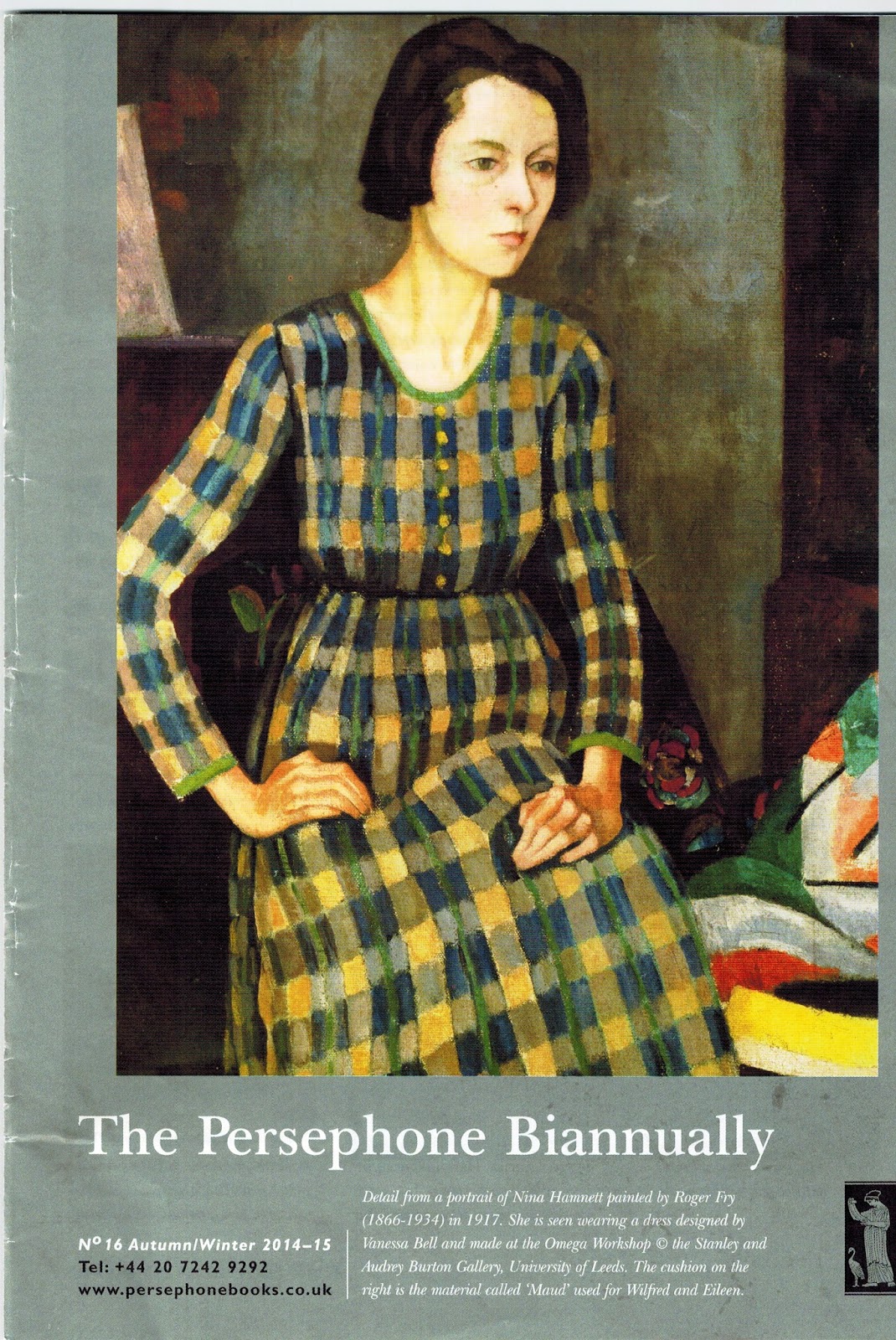I have bought several novels published by Persephone Books for myself or as presents either by ordering online or visiting their exquisite shop in Conduit Street in London. They make marvellous presents for reader- and writer-friends.
This
publisher - dedicated to reprinting neglected fiction and non-fiction mid
twentieth century books, mostly by women - must be unique on the contemporary
publishing scene in that they show high respect writers and readers and have a
brilliant sense of the aesthetic and physical nature of books.
This
was brought home to me when I came across a copy of their 2014 winter
catalogue called The
Persephone Biannually, It is
truly a beautiful object featuring paintings and images from the 20th Century
art and essays by contemporary writers which serve as forwards and afterwards
of the re-published novels.
I was particularly delighted to read Harriet Evans's* passionate and iconoclastic essay introducing Dorothy Whipple's novel 'Because of The Lockwoods.' It is worth getting hold of Persephone Biannually just for this essay alone. Like me you will be movedo to buy Dorothy Whipple's Persephone novel.
In her essay of appreciation Harriet Evans says
 '... the world of Literary London, for want of a better expression, is today
perhaps more sexist and snobbish (especially geographically snobbish), almost
unbelievably, than it was when she was writing, than in the time when she was
writing and the cultural tide of opinion and the cultural tide of of opinion,
is these days against her. Another reason why Whipple has been disregarded by
the literary mainstream is that we still live in a sexist world and in addition
one where writing from the North of England is undervalued.'
'... the world of Literary London, for want of a better expression, is today
perhaps more sexist and snobbish (especially geographically snobbish), almost
unbelievably, than it was when she was writing, than in the time when she was
writing and the cultural tide of opinion and the cultural tide of of opinion,
is these days against her. Another reason why Whipple has been disregarded by
the literary mainstream is that we still live in a sexist world and in addition
one where writing from the North of England is undervalued.'Looking back on a lifetime of writing from the North of England I can heartily endorse this.
*Harriet
Evans, now a very successful novelist, was once my own very much appreciated
editor. W.
Dorothy Whipple and her books. Click here
http://www.persephonebooks.co.uk/dorothy-whipple/








.jpg)

.jpg)
.jpg)
.jpg)


.jpg)